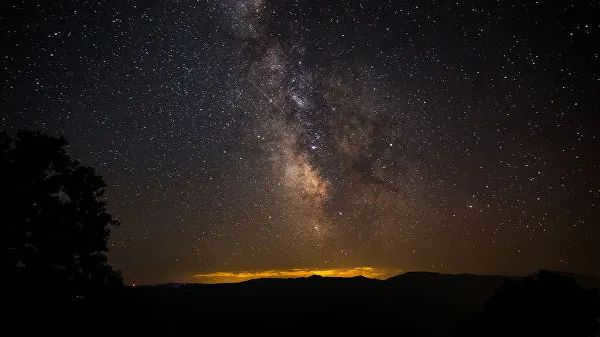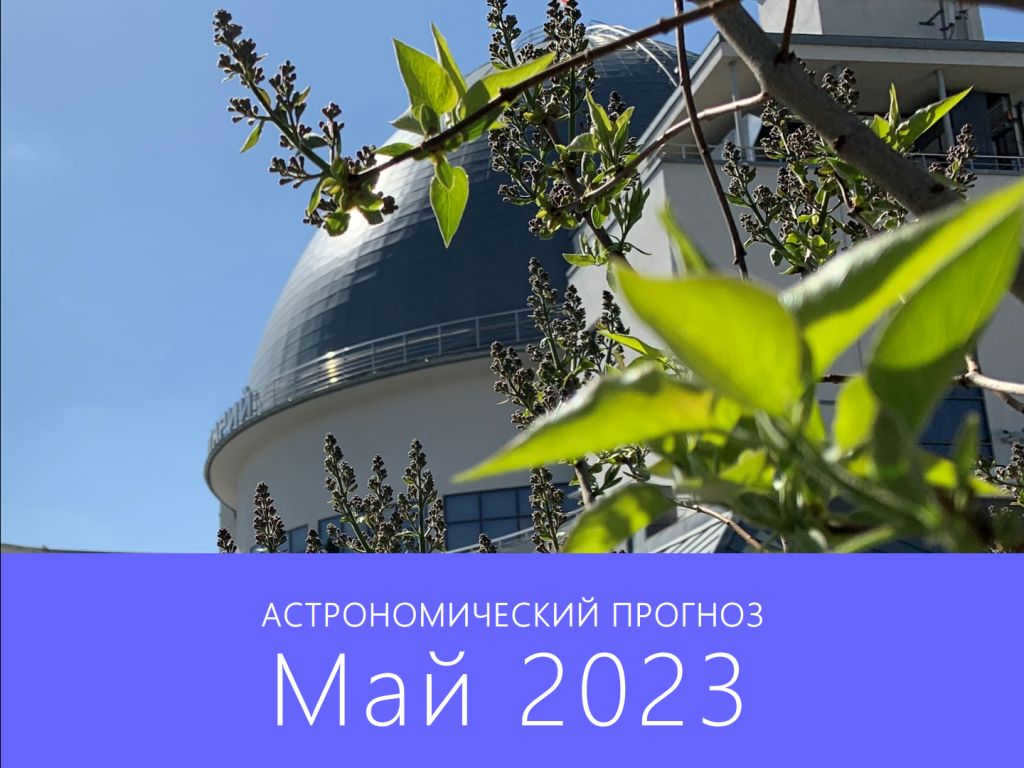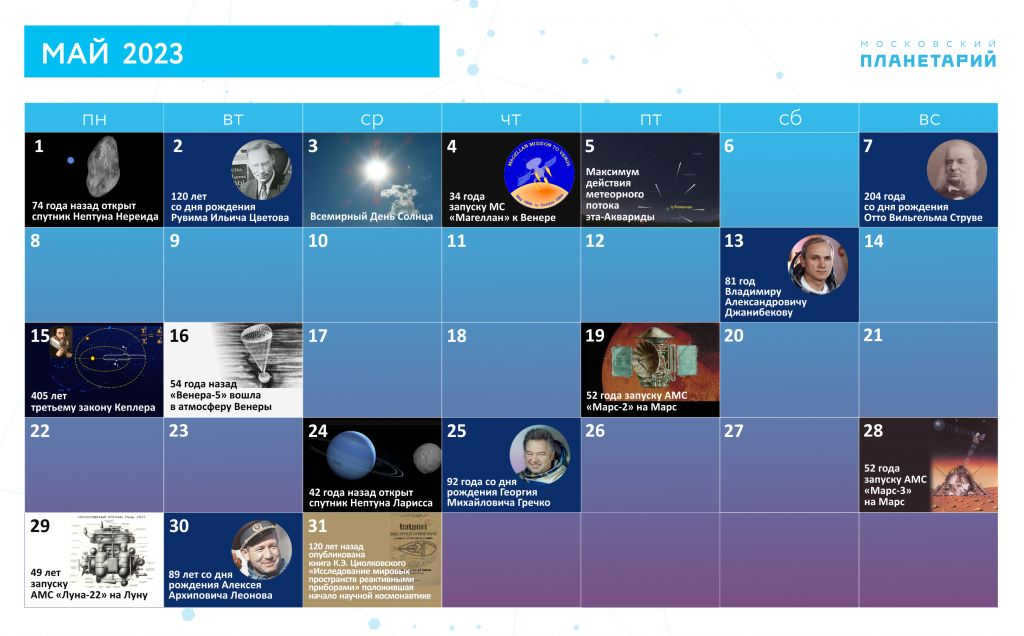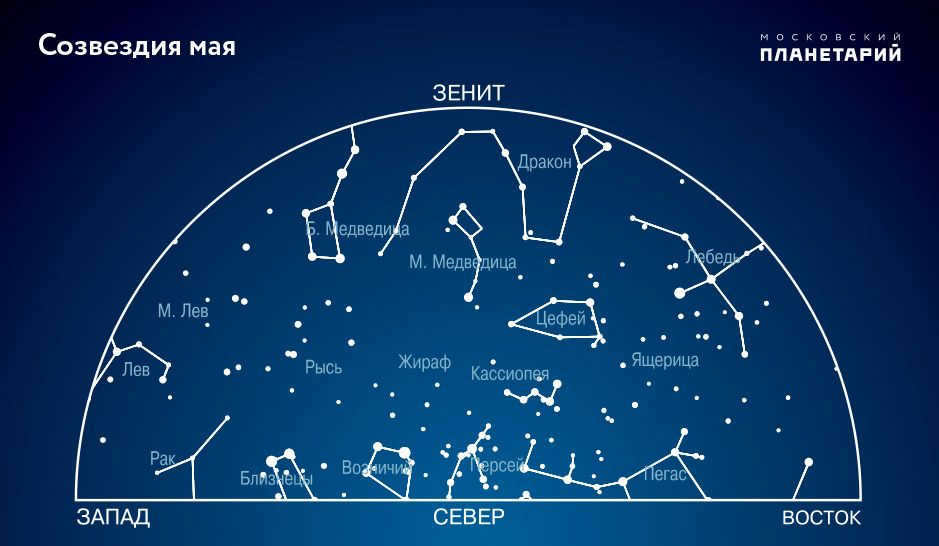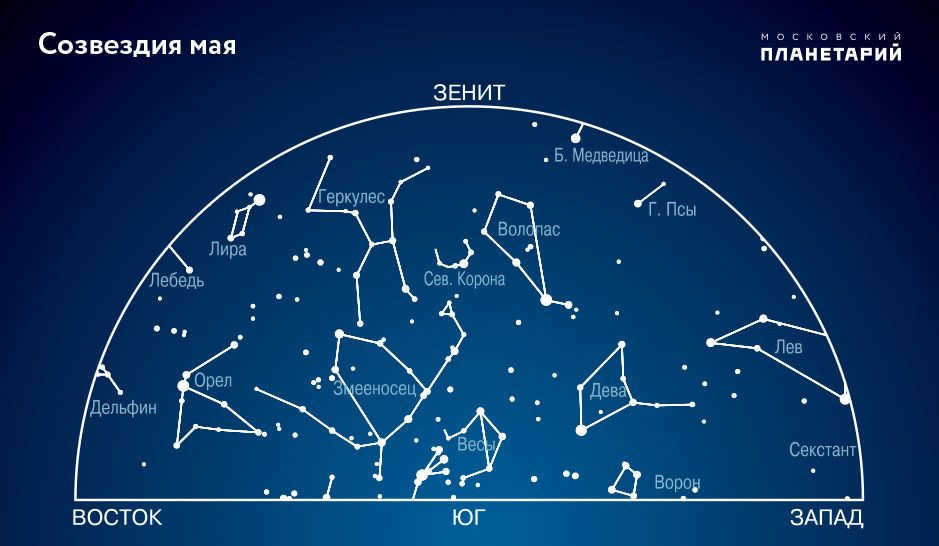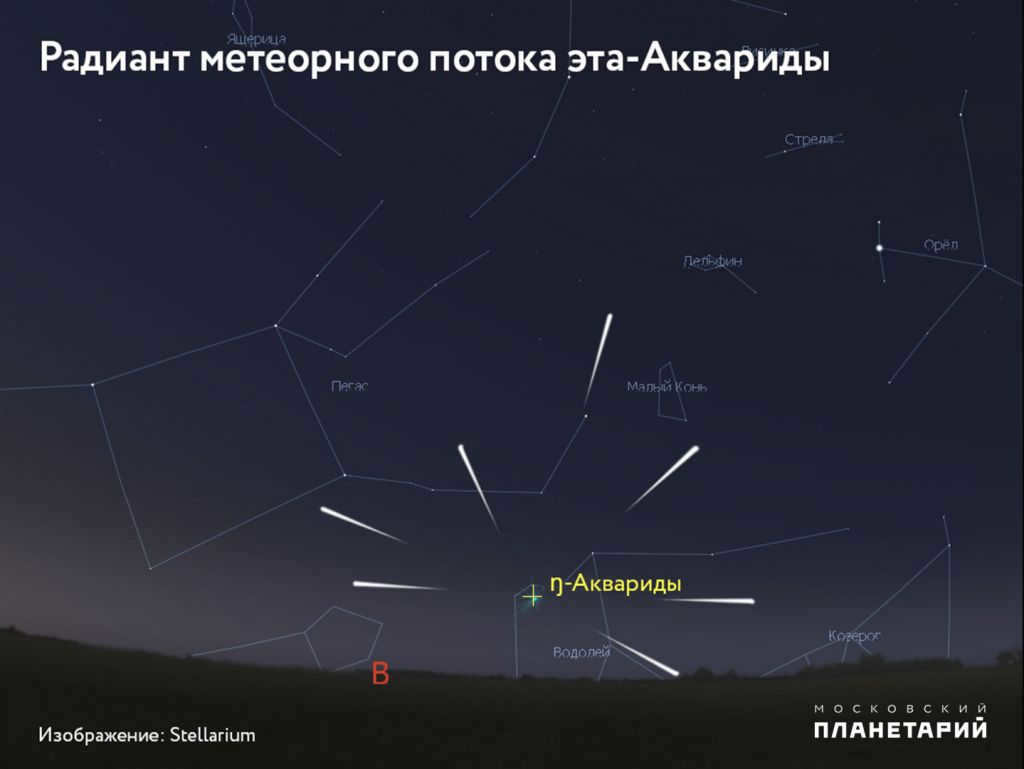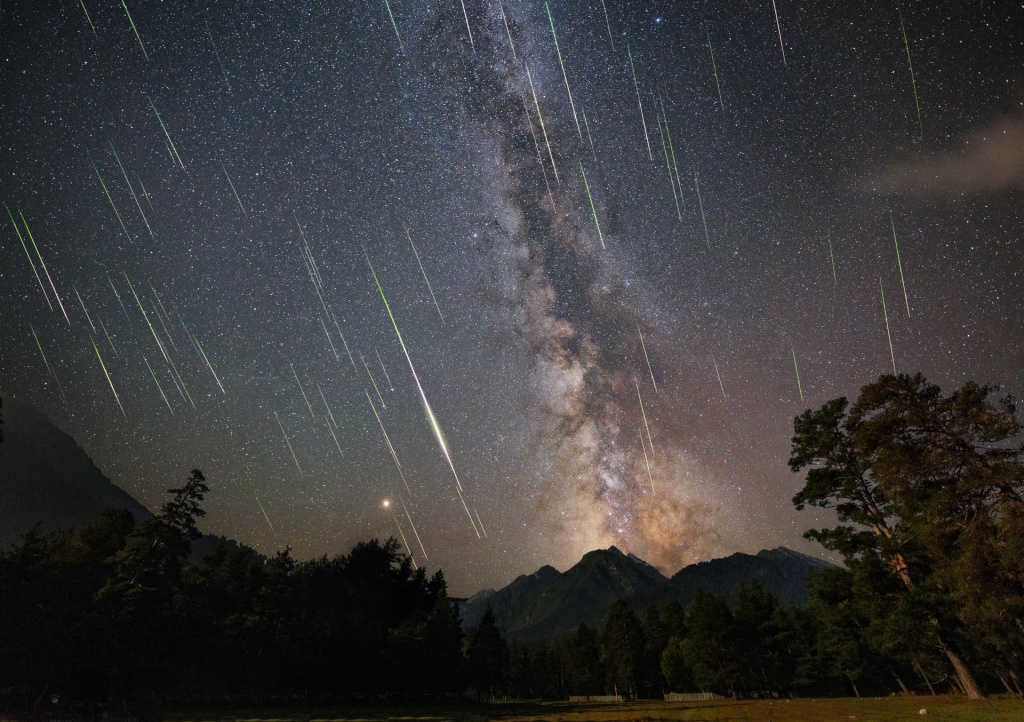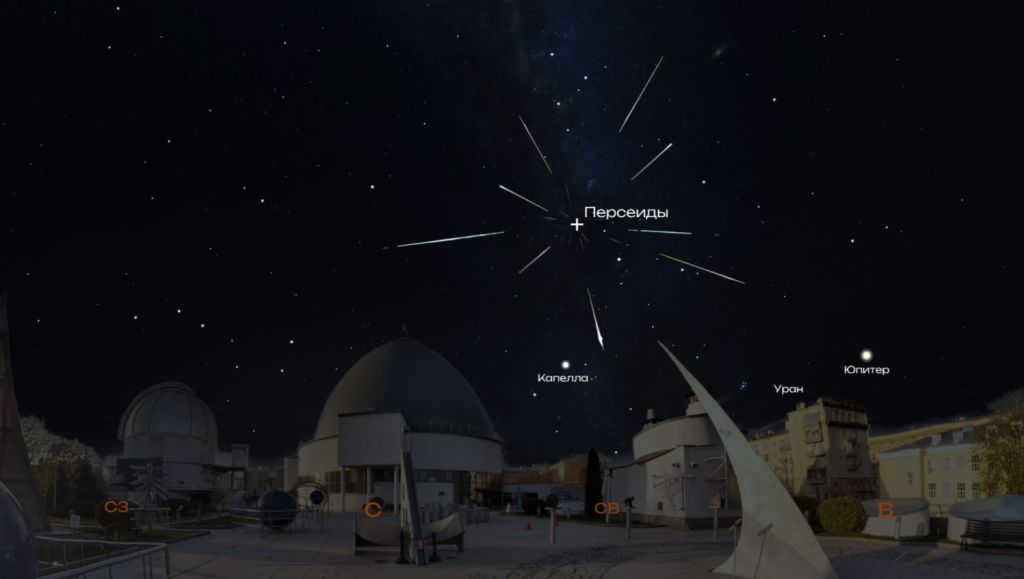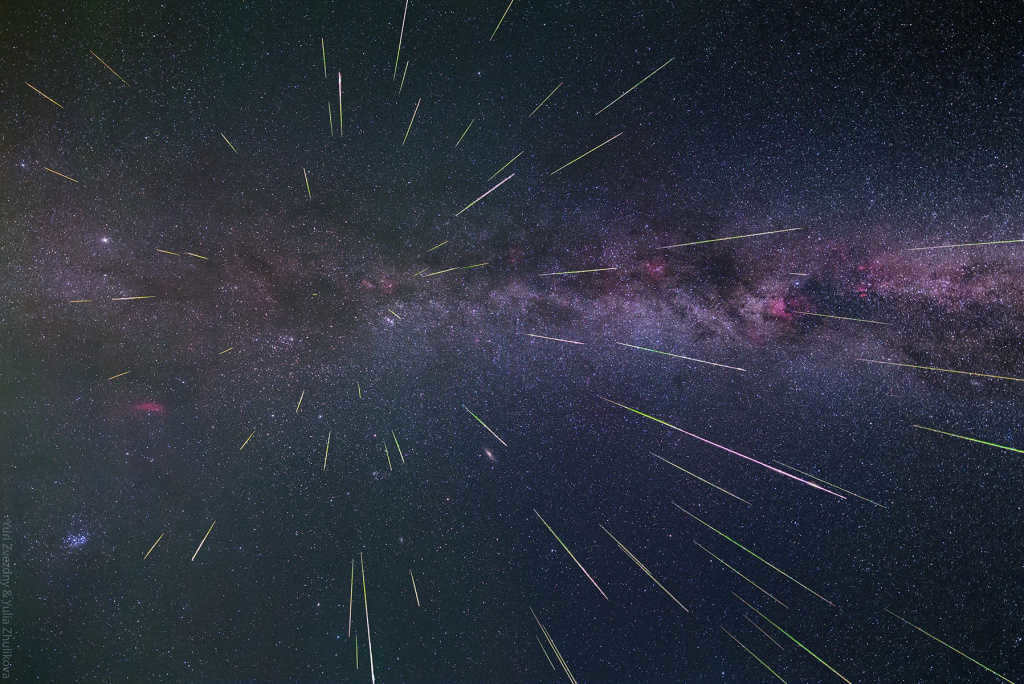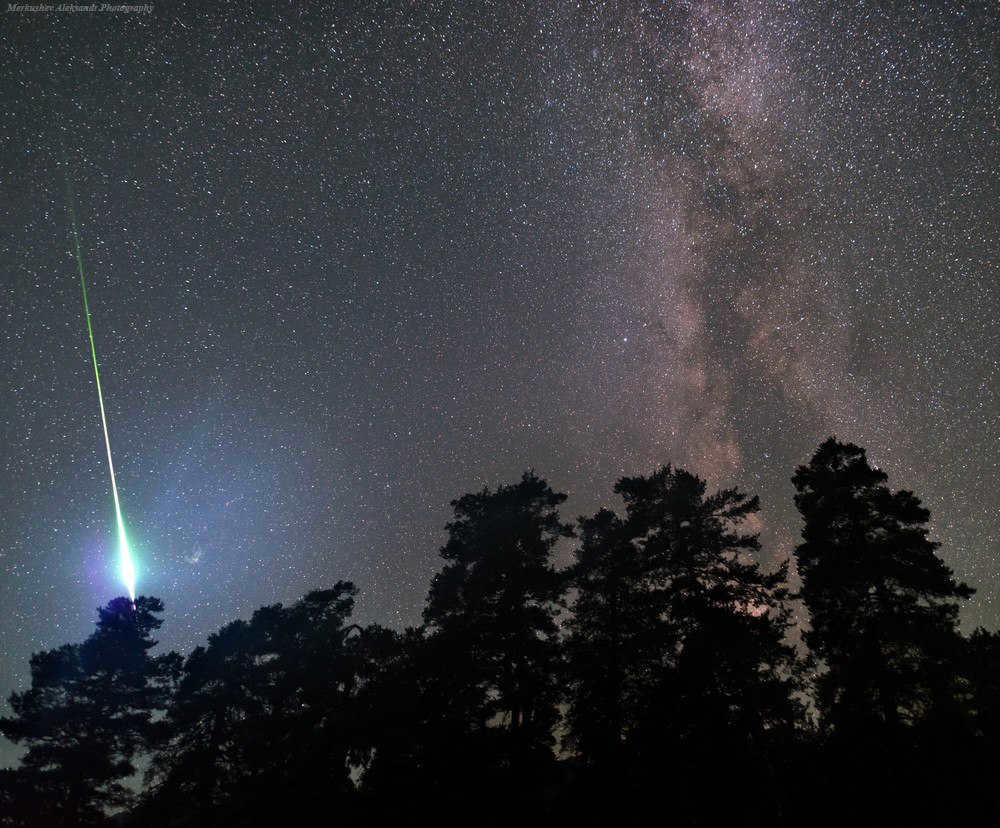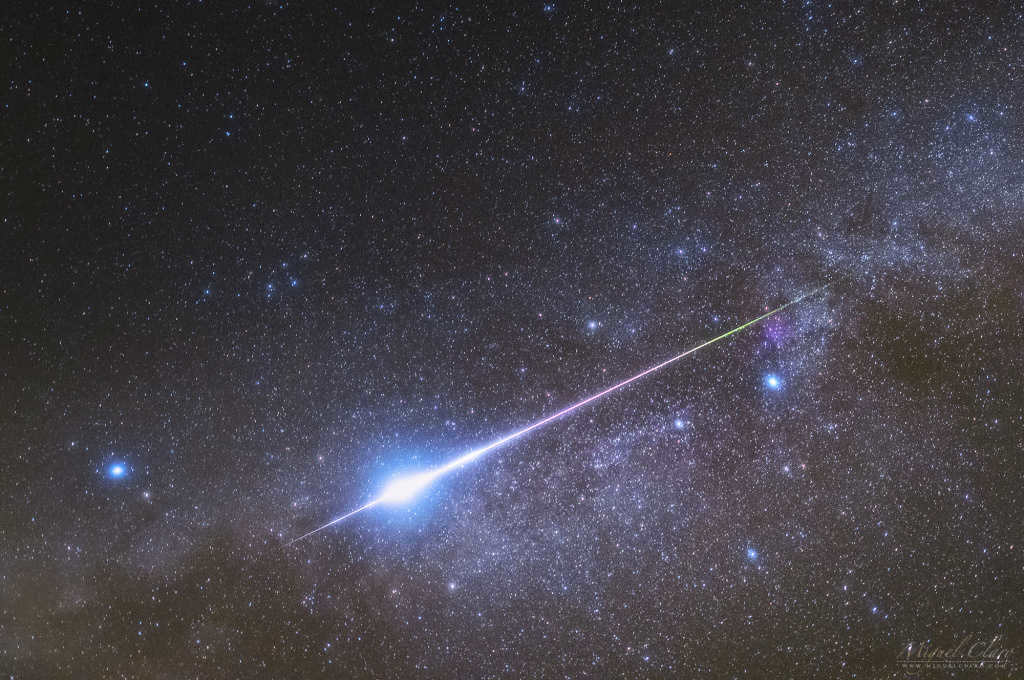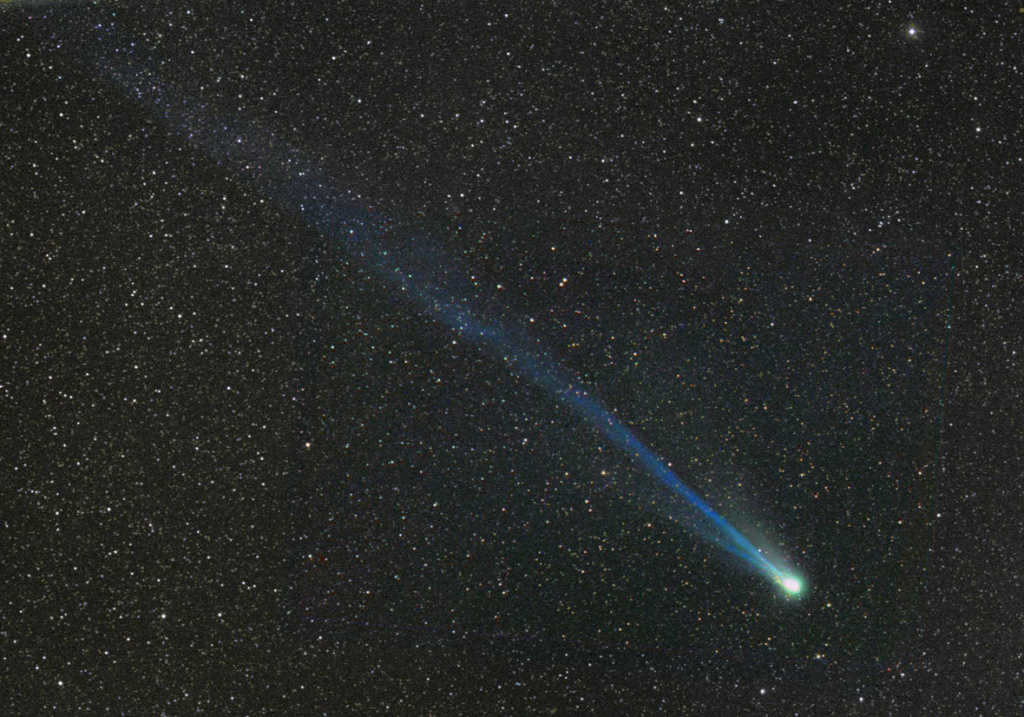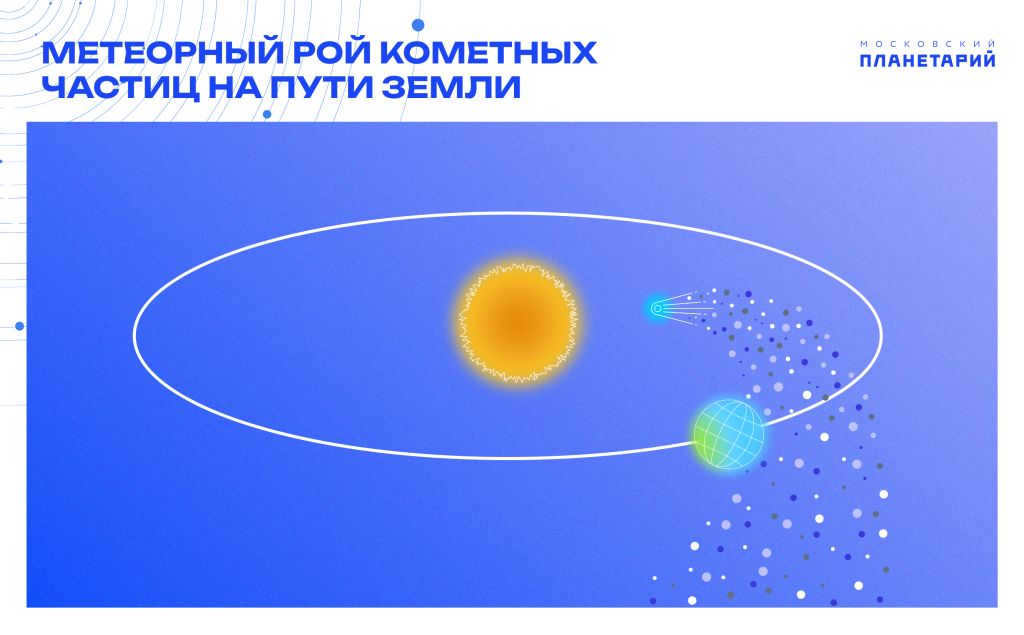The ancient Egyptians held the belief that the depictions of constellations are divine messages, and one simply needs to acquire the ability to interpret them accurately.
Johannes Kepler, who unveiled the laws governing the movement of planets, firmly believed throughout his lifetime that planets, the Sun, and stars are sentient beings with intelligence.
Star Groups
From now until July 11, 2023, the Sun can be found in the star group known as Cancer, and then it moves on to the star group Leo.
Between August 1 and August 21, precisely at midnight, the star group Capricorn reaches its highest point in the sky, and from August 2 it is accompanied by the star group Aquarius.
In contemporary astronomy, constellations are divisions of the celestial sphere that represent specific areas of the starry sky. These divisions are based on traditional star groupings that were established by the early 20th century, as well as the need to ensure comprehensive, continuous, and non-overlapping coverage of the entire celestial sphere.
As of 1935, the International Astronomical Union has defined a total of 88 constellations in our sky.
The ancient Greeks used their map of the starry sky as a reference for delineating constellations. However, the ancient Greeks did not focus on precisely defining constellations, as they viewed the starry sky as a complete world filled with legends and a representation of the universe for those who were initiated. Consequently, the same stars could be used to form different images and different constellations. Many of these images have survived to the present day, but they are now referred to as asterisms, which are specific combinations of stars within constellations.
A comprehensive guide to the constellations as seen from the Moon
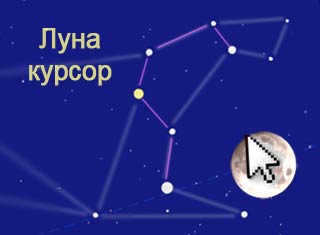
Check out the Moon’s movement through the constellations on the Moon Cursor page to see its schedule.
August 2023: A Month of Twinkling Stars
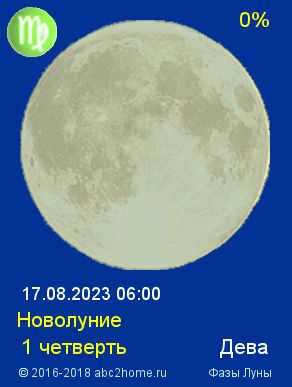

August is the optimal period for observing the zodiacal constellations Capricorn and Aquarius. From now until August 19, these constellations reach their highest point together, and then Aquarius remains alone and seems to dominate the night sky in the southern direction.
In August, in the evening sky, the autumn-summer triangle gradually moves into the western half of the sky after midnight, signaling the approaching autumn.
Starting from the initial days of August, around midnight, you can spot the constellations located above the ecliptic in the southern sky. These constellations include Dolphin, Lesser Horse, and Pegasus, while the constellations of Fox, Swan, Lizard, and Andromeda can be observed even higher up.
When stargazing in Moscow and its suburbs at midnight, you will notice the constellation of Cepheus at the zenith, and by the end of August (starting from 27.08.2023), the primary midnight constellation becomes Cepheus. Lizard.
Planets in August:
Jupiter is located in Aries.
Venus is positioned as The Evening Star in the constellation Leo at the beginning of August, and after August 11, 2023, it becomes the Morning Star. On August 14, 2023, Venus moves into Cancer.
Saturn is present in Aquarius throughout August.
Mars is situated in the constellation Leo until August 17, and then it moves to Virgo.
In August, the Southern Delta Aquariids (Aquarius) meteor stream is at its peak, making it the most intense meteor shower in the world. This stream shows no sign of slowing down significantly, as it continues to gather strength. The Perseids meteor shower, which is associated with the comet Swift-Tuttle and will next pass near Earth in 2126, also reaches its maximum intensity on August 12.
During August, the zodiacal constellations Capricorn and Aquarius (Fig.2) reach their highest point in the sky at midnight.
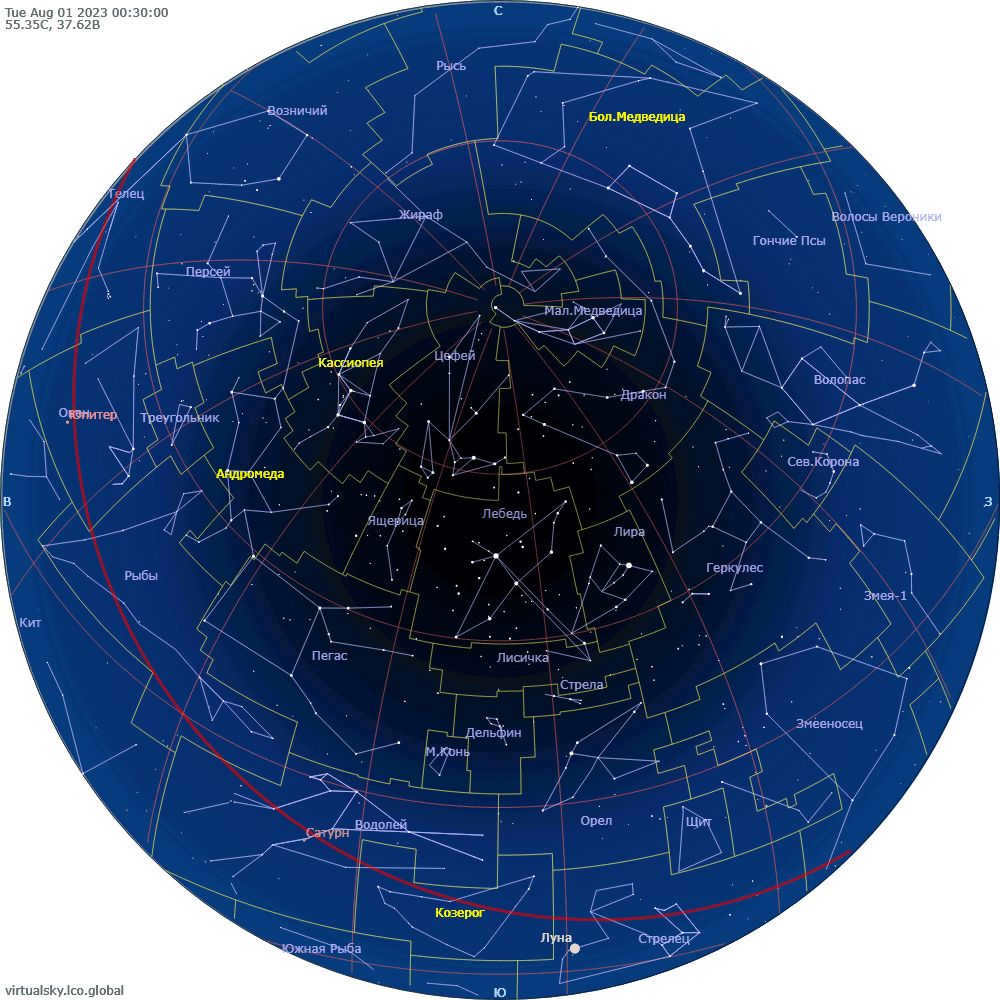
Figure 2 Bigpic. Starry sky above the city of Moscow during the midnight hours of August 1st, 2023.

Our virtual planetarium can be accessed on the Constellations page
Figure 2: Starry sky above Moscow at midnight on August 1, 2023 (click on the image to enlarge).
The current motion of the Moon by constellations schedule.
Ursa Major constellation, diagram, history and myths, Big Dipper asterism, prominent stars, how to locate the Ursa Major constellation.
Ursa Minor constellation, diagram, Little Dipper asterism, prominent stars, how to find the Ursa Minor constellation.
Cassiopeia constellation, diagram, Cassiopeia’s Chair, prominent stars, how to locate the Cassiopeia constellation.
The Orion constellation is represented in a diagram that includes stars such as Rigel and Betelgeuse. It has a rich history and mythology associated with it. One of its notable features is the Orion Belt asterism. If you want to find the Orion constellation, you can use this information as a guide.
The Cepheus constellation is depicted in a schematic that showcases various asterisms like Home and Running hut. It also contains bright stars and has its own set of history and myths. If you’re interested in locating the Cepheus constellation, you can follow the instructions provided.
In the Andromeda constellation, you can find the Andromeda Nebula along with other bright stars. A schematic is available to help you identify this constellation. By following the given information, you’ll be able to locate Andromeda in the night sky.
Similar to the other constellations, the Perseus constellation has its own schematic representation. It includes stars like Mirfak and Algol and has a fascinating history and mythology. The Perseus Segment asterism is a notable feature. If you’re looking for the Perseus constellation, the provided instructions will be of great help.
The Swan constellation is illustrated in a diagram that features stars like Deneb and Albireo. It has its own historical and mythical significance. The Northern Cross asterism is a prominent aspect of this constellation. To find the Swan constellation, follow the instructions given.
The Lyra constellation is depicted in a diagram that showcases stars like Vega and Sulafat. It also has a rich history and mythology associated with it. The Trefoil asterism is an interesting feature of this constellation. If you want to locate the Lyra constellation, the provided information will be useful.
Giraffe constellation, diagram, history, Kemble’s Cascade asterism, bright stars, how to find the constellation Giraffe.
The Volopassus constellation, chart, Arcturus and bright stars, history and myths, Plow asterism, how to locate the constellation.
Online Moscow starry sky
Map of the starry sky above Moscow. Borders and names of constellations visible at the latitude of Moscow
Keyboard shortcuts for controlling the online map of the starry sky:
(use the cursor on the map and a Latin keyboard layout)
- a → enable/disable haze (atmospheric simulation)
- g → adjust the horizon
- h → select a different map view
- i → invert the colors
- , → show the ecliptic
- ; → draw the meridian line
- e → show the equatorial grid
- z → show the azimuthal grid
- m → show the galactic grid
- M → show the boundaries of the Milky Way
- q → hide the sides of the world
- s → hide the stars
- S → hide the names of the stars
- u → hide the names of the planets
- p → hide the planets and the Sun
- o → show the planetary orbits
- c → show the diagrams of the constellations
- v → hide names of constellations
- b → hide boundaries of constellations
- R → display meteor radii
- 8 → set current time
- j → slow down time
- k → pause time
- l → speed up the countdown
- – → go back one day
- = → go forward one day
- [ → go back one week
- ] → go forward one week
- % → rotate counterclockwise
- ‘ → rotate clockwise
- & → display dim stars
- ( → hide dim stars
1 or ? → display this list on the star map
Constellation Leo, diagram, asterism Sickle, Regulus and other bright stars, history and myths, how to find the constellation.
Virgo constellation is characterized by its chart, asterism Harp, Spica and bright stars. It has a rich history and mythology associated with it. To find the constellation Virgo, you can refer to the provided diagram.
Libra constellation is known for its diagram and Pinches asterism. It also has several bright stars. If you’re interested in finding the constellation Libra, you can follow the instructions given.
Scorpio constellation is represented by its diagram and Hook asterism. It is also home to numerous bright stars. If you want to locate the constellation Scorpio, the instructions provided will be helpful.
Sagittarius constellation is characterized by its diagram and Arrow asterism. It is known for its bright stars. If you’re interested in finding the constellation Sagittarius, you can refer to the provided instructions.
Capricorn constellation is depicted by its diagram and asterism Horn of Plenty. It also has several bright stars. To find the constellation Capricorn, follow the given instructions.
Constellation Pisces is known for its diagram and asterisms Major and Minor Pisces. It is home to several bright stars. To locate the constellation Pisces, refer to the provided instructions.
Aquarius constellation is represented by its chart and asterisms Pitcher and Water Stream. It also has bright stars. If you want to find the constellation Aquarius, the instructions provided will be useful.
Aries constellation, diagram, Aries Sign asterism, Hamal, Sheratan and the most luminous stars, tips on locating the constellation
Taurus constellation, diagram, Taurus Sign asterism, bright stars, tips on locating the constellation
Gemini constellation, diagram, Gemini asterism, bright stars, tips on locating the constellation
Cancer constellation, diagram, Donkey asterism, bright stars, tips on locating the constellation
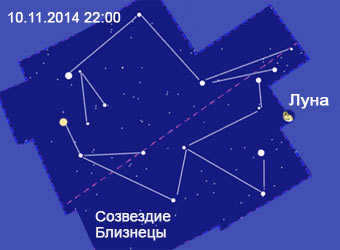

The Moon and the constellations (The Moon – cursor)
Timetable of the Moon’s movement across the constellations in November 2014. How can you locate the constellations?
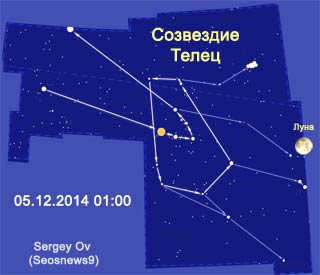
Moon and constellations (Moon – cursor 2014)
December 2014’s schedule of Moon’s movement through the constellations. How can we locate the planets?
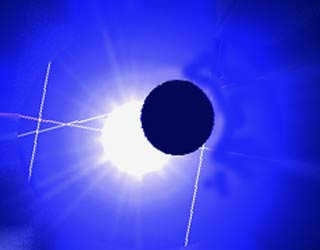
Discover the beauty of the Moon and constellations (simply move your cursor over the Moon).
Check out the timetable for the Moon’s movement through the constellations in March 2015. Need help finding a specific constellation?
Custom star maps are available for major cities and popular vacation destinations:
Moscow: Explore the starry sky of Moscow with our online mini planetarium.
St. Petersburg: Discover the celestial wonders of St. Petersburg with our web planetarium.
Nizhny Novgorod: Immerse yourself in the starry sky of Nizhny Novgorod with our online planetarium.
Novosibirsk: Journey through the starry sky above Novosibirsk with our online planetarium.
Yekaterinburg: Experience the captivating starry sky above Yekaterinburg with our web planetarium.
Kazan: Discover the breathtaking starry sky over Kazan with our online planetarium featuring customizable settings.
Krasnodar: Explore the mesmerizing starry sky of Krasnodar with our JavaScript planetarium.
Samara: Embark on a celestial journey through the starry sky over Samara with our online planetarium.
Krasnoyarsk: Discover the wonders of the starry sky above Krasnoyarsk with our JavaScript planetarium.
Chelyabinsk: Immerse yourself in the starry sky over Chelyabinsk with our JS planetarium.
Omsk: Calculate the constellations in the starry sky above Omsk with our online constellation chart.
Perm: Map out the starry sky above Perm with our online constellation mapping tool.
Voronezh: Explore the celestial wonders of Voronezh with our online constellation mapping tool.
Murmansk: Virtual planetarium with a map of the starry sky over Murmansk
Vladivostok: Java Script Planetarium with a map of the starry sky over Vladivostok
Petropavlovsk-Kamchatsky: Internet planetarium with a map of the starry sky above Petropavlovsk-Kamchatsky
Sochi: Online planetarium software with a starry sky map of Sochi
Crimea: Online planetarium with a map of the starry sky over Crimea.
There are plans to create pages for the following cities: Chelyabinsk, Omsk, Rostov-on-Don, Ufa, Perm, Voronezh, Volgograd, Saratov, Kaliningrad, Sevastopol, Tyumen.
Pages have been created for “Starry sky” – Chelyabinsk, Omsk, Perm, Voronezh.
Interactive map of the starry sky of a specific area at a given time:
Discover the Starry Sky of Russia: Interactive Planetarium Online
Explore the Starry Sky Maps of Russian Cities and Beyond
Experience the Beauty of Meteor Streams in Earth’s Atmosphere
| Flow name | Period of passage | Date of peak density flux | Number of meteors per hour | Intensity luminosity |
| Quadrantids | December 28 – January 12 | January 03 | 120 | High |
| Gamma Velids (Sails) | January 1 – January 15 | January 5 | 2 | Weak |
| Alpha Crucidae (Southern Cross, ACR 314) | January 6 – January 28 | January 15 | 3 | Weak |
| Delta Cancersida (Cancer) | January 1 – January 31 | January 17 | 4 | Medium |
| Alpha Hydridae | January 5 – February 14 | January 19 | 2 | Weak |
| Eta Carinides (Kiel, ECR) | January 14 – January 27 | January 21 | 2 | Weak |
| Alpha Carinidae (ACR) | January 24 – February 9 | January 30 | 2 | Weak |
| Delta Velidae | January 22 – February 21 | February 5 | 1 | Faint |
| Alpha Centaurides (ACE) | January 28 – February 21 | February 8 | 6 | Medium |
| Omicron Centaurides | January 31 – February 19 | February 11 | 2 | Faint |
| Theta Centaurids | January 23 – March 12 | February 21 | 4 | Weak |
| February Leonids | February 1 – February 28 | A few | 5 | Medium |
| Delta Leonids | February 15 – March 10 | February 24 | 2 | Medium |
| gamma-Normides | February 25 – March 28 | March 14 | 6 | Medium |
| Virginidae | March 1 – April 15 | Several | 5 | Middle |
| Delta Pavlinidae | March 11 – April 16 | March 30 | 5 | Weak |
| Lyridae | April 16 – April 25 | April 22 | 18 | Strong |
| P-Puppids | April 15 – April 28 | April 23 | Perem | |
| Alpha Boeotidae | April 14 – May 12 | April 28 | 2 | Weak |
| Mu Virginidae | April 1 – May 12 | April 29 | 2 | Weak |
| Omega Capricornidae | April 19 – May 15 | May 2 | 2 | Weak |
| Eta Aquaridae | April 19 – May 28 | May 6 | 50 | Strong |
| Alpha Scorpionidae | May 1 – May 31 | May 16 | 5 | Medium |
| Aeta Lyridae | May 3 – May 14 | May 9 | 3 | Weak |
| Beta Coronaustrinidae | April 23 – May 30 | May 16 | 3 | Weak |
| Omega Scorpionidae | May 23 – June 15 | June 2 | 5 | Weak |
| Arietidae (Aries) | May 14 – June 24 | June 7 | 50 | Strong |
| Tau Herculidae | May 19 – June 19 | June 9 | 1 – 72 | Perem |
| Sagittarides | June 1 – July 15 | June 19 | 5 | Middle |
| Beta Taurids (Taurus) | June 5 – July 18 | June 29 | Perem | |
| June Lyrids | June 10 – June 21 | June 15 | Perem | |
| Tau Cetidae (Whale) | June 18 – July 4 | June 27 | 4 | Weak |
| June Boeotidae | June 22 – July 2 | June 27 | Perem | |
| Tau Aquariids | June 19 – July 5 | June 28 | 7 | Weak |
| Theta Ophiuchidae (Serpentine) | June 4 – July 15 | June 29 | 2 | Weak |
| Pegasids | July 7 – July 13 | July 10 | 3 | Medium |
| July Phenicides | July 10 – July 16 | July 13 | Perem | |
| Alpha Cignidae | July 11 – July 30 | July 18 | 2 | Weak |
| Sigma Capricornidae (Capricorn) | July 15 – August 11 | July 20 | 5 | Weak |
| Southern Piscids (Pisces) | July 15 – August 10 | July 28 | 5 | Medium |
| South Delta Aquariids (Aquarius) | July 12 – August 23 | July 30 | 25 | High |
| Alpha Capricornidae (Capricorn) | July 3 – August 15 | July 30 | 5 | Medium |
| Southern Iota Aquariids (Aquarius) | July 25 – August 15 | August 4 | 2 | Medium |
| North Delta Aquariids (Aquarius) | July 15 – August 25 | August 8 | 4 | Middle |
| Perseids | July 17 – August 24 | August 12 | 150 | High |
| Kappa Cignidae (KCG), constellation Swan | August 3 – August 25 | August 17 | 3 | Medium |
| Northern Iota Aquariids (Aquarius) | August 11 – August 31 | August 20 | 3 | Middle |
| Pi Eridanides | August 20 – September 5 | August 25 | 4 | Weak |
| Gamma Doradidae (Goldfish) | August 19 – September 6 | August 28 | 5 | Weak |
| Alpha Aurigidae (Ascendant) | August 28 – September 5 | September 1 | 6 | Medium |
| September Perseids | September 5 – September 21 | September 9 | 5 | Medium |
| Ariatids (Aries) | September 9 – September 16 | September 12 | 3 | Weak |
| Piscidae (Pisces) | September 1 – September 30 | September 20 | 3 | Medium |
| Kappa Aquaridae | September 8 This trend, a relatively recent occurrence in Russia, has emerged due to the desire of tourists to embark on a quest to witness the majestic spectacle of the aurora borealis. In the past, only a select few ventured to the Murmansk region to marvel at the vibrant hues dancing across the sky, as well as the dazzling stars of the polar night. However, these excursions are now gaining popularity, and one does not necessarily have to travel to the ends of the earth – one can witness this natural phenomenon not only beyond the Arctic Circle, but also in other seasons besides winter. For instance, even in April 2023, the northern lights were observed in Moscow! And as for the stars, they are closer than they may appear. Why bother gazing at the stars? There are numerous advantages to doing so. Over the years, people have acquired the ability to identify the changing seasons and navigate through space thanks to the stars. Furthermore, the observations made by scientists have enabled us to delve into the mysteries of the cosmos. Additionally, stargazing has become a popular romantic pastime, especially with the availability of modern applications that allow anyone to access star maps. By the way, if you’re interested in exploring the night sky and learning to recognize constellations, a visit to the Moscow Planetarium is highly recommended. This will provide you with a head start in understanding what to search for in the sky and how to locate prominent celestial bodies. A brief overview of physicsWhat exactly is the activity of stargazing? It involves observing celestial bodies, such as stars, which do not actually plummet to the ground. Instead, what we witness are minuscule fragments of a comet that passed through a specific section of the sky over a century ago – these fragments are known as meteors. Upon entering the Earth’s atmosphere, they swiftly and brilliantly disintegrate. It is important not to mistake a meteor shower for a meteorite shower, as the latter occurs when a large meteoroid breaks apart and its fragments descend to the Earth’s surface. Astronomy seasonThe prime period for observing celestial bodies is during the month of August. It is during this time, specifically on the night of August 12th to the 13th, that the Earth passes through the most intense meteor shower of the year, known as the Perseids. This meteor shower takes its name from the tail of the Swift-Tuttle Comet, which was first identified in 1862 by American astronomers Lewis Swift and Horace Tuttle. The stream of dust particles emitted by the comet originates in the region of the sky where the constellation Perseus is situated, hence the name. This captivating phenomenon can be witnessed annually by individuals residing in the Northern Hemisphere. If you didn’t get a chance to see the Perseids, don’t worry: there are several meteor showers throughout the year. For instance, towards the end of December and beginning of January, the sky is graced by the Quadrantids. Quadrantids During their peak, you can witness one or two shooting “stars” per minute. And in mid-April, we have the Lyrids, which can rival the Perseids in terms of the number of meteors. But wait, there’s more! In May, we have the Eta Aquarids and the daytime Arietids (more often heard than seen), in June – the Boötids, in October – the Draconids and Orionids, in November – the Leonids, and in December – the Geminids. Weather conditionsPrior to embarking on a stargazing adventure, it is advisable to examine the weather forecast. You can refer to the weather forecast as well as the celestial activity calendar, which are accessible through specialized applications or on the StarWalk Space website. Additionally, reputable news outlets often provide information about upcoming eclipses and planetary alignments. It is important to keep in mind that factors such as a full moon or heavy fog can significantly impact visibility, even during optimal stargazing conditions. Generally, the most favorable time for stargazing is between 11:00 PM and 4:00 AM, with the activity typically peaking after midnight. How to select an ideal locationThere is an abundance of satellite cities surrounding Moscow, making it challenging to discover areas with minimal light pollution. To assist in determining the best direction for your travels, consult a light map that displays the level of light pollution in the sky within the Moscow region. If you desire an authentic experience of a dark, starry sky, it is recommended to venture at least one hundred kilometers beyond the Moscow Ring Road, towards the neighboring regions. Additionally, to avoid any unexpected obstacles on your journey, it is advisable to arrive at your destination in advance or even conduct a daytime inspection beforehand. For those who are not prepared to seek out dimly lit areas for stargazing, there are specialized tours guided by experienced astronomers. The best option for this type of family recreational activity is to contact a store that sells and repairs telescopes. Additionally, during the "Pushchino Perseids" festival in Pushchino, you can participate in an evening “stroll” through the sky with telescopes. This event takes place every year in mid-August, when the meteor shower is at its peak. If you are not willing to venture far outside the city, you can begin your exploration of the stars at the People’s Observatory located in Gorky Park. Where in the Moscow region can you observe the Perseids meteor shower?
During warm summer evenings, one can enjoy not only strolling under the moonlight but also organizing a genuine star-gazing experience. Particularly on the night of August 12th, one can witness the Perseids meteor shower. In urban areas, this can be quite challenging due to the interference from streetlights, making it difficult to see anything even on clear nights. Therefore, it is advisable to venture to the Moscow region, where there are several observatories equipped with telescopes. For more information on where to go for stargazing, refer to the article “360”. What is the Perseids meteor streamThe Perseids meteor stream is known for being one of the most abundant and brightest meteor showers. It occurs annually, typically around the same dates, with its peak usually falling on the night of August 11-12. Dmitry Vibe, the Head of the Department of Physics and Evolution of Stars at the Institute of Astronomy of the Russian Academy of Sciences, explained to “360” that meteor showers are the remnants of disintegrating comet nuclei. “As a comet orbits the Sun, it leaves behind a cloud of particles that can vary in size,” he explained. These particles are typically small pebbles, although sometimes they can be as large as a meter in size. When they enter Earth’s atmosphere at high speeds, they heat up and vaporize, leaving behind a brief trail. “Particles are generated by specific comets and have a specific position in Earth’s orbit. Every year, Earth intersects with these particles on the same dates,” he provided an explanation. As per the specialist, this phenomenon can be observed worldwide and is visible to the naked eye. The crucial factors are a clear sky and unobstructed horizon. Nonetheless, the further away from Moscow one is, the more visible the fiery particles become due to minimal city light interference. For individuals interested in witnessing the meteor shower up close, “360” has compiled a list of the nearest observatories to the capital. The Zvenigorod Astronomical Observatory is involved in the study of comets, meteors, and satellite observation. In 2009, this scientific facility, which is part of the Institute of Astronomy of the Russian Academy of Sciences, celebrated its 50th anniversary. The observatory’s primary instrument is the SAU (high-precision astronomical installation), a unique satellite camera that allows for simultaneous tracking of multiple satellites. In addition to the main camera, the observatory also operates several other telescopes and astronomical instruments. The observatory is also home to the “glass archive,” a collection of photographic plates containing images of the night sky captured throughout the observatory’s history. These plates are currently being digitized. Excursions and classes with schoolchildren are regularly conducted at the observatory. Additionally, there are open days available for the public to visit. To find out the upcoming dates for these events, it is necessary to contact the Institute of Astronomy of the Russian Academy of Sciences. The contact information can be found on their official website. The most convenient way to reach the observatory is by taking a train from Belorussky railway station to the “Zvenigorod” station. From there, one can board bus number 24 and alight at the “Lutsino” stop, where the chapel is situated. If you face away from the chapel, the observatory can be seen at the far end of the field. Puschino Radio Astronomy ObservatorySituated in the urban district of Pushchino, the Puschino Radio Astronomy Observatory stands as the oldest scientific institution in Russia. A visit to this science town is a must, if only to witness the impressive 22-meter diameter antenna of the radio telescope. This remarkable instrument has been instrumental in the study of the planets within our solar system as well as the satellites of Jupiter. The radio telescope serves as the conduit for all the invaluable information collected from space. Launched in 2011, it now orbits the Earth at a distance of 10,000 kilometers, while venturing as far as 300,000 kilometers away. Using radio telescopes, which are located at the observatory, scientists are able to study the fluctuations of the plasma near the sun. This plasma acts as a lens, allowing radiation to pass through. The frequency of these fluctuations determines the occurrence of solar auroras and magnetic storms. Scientists also examine the radiation emitted by pulsars, which are brief flashes of light that last about one second. If you visit in August, you can attend the “Pushchino Perseids” astronomical festival. In addition to the open day and guided tours of the observatory, you can also witness the annual Perseid meteor shower in the evening. In the event of cloudy skies, festival attendees can enjoy watching space-themed movies in the observatory auditorium, which is also a great option. The alternative option is to use the subway and get off at Lesoparkovaya station. From there, you can take bus number 359 and easily reach the renowned “Shop Bunny”. Ka-Dar ObservatoryLocated in the village of Kuzminskoye in the Domodedovo urban district, the Ka-Dar Observatory is a unique two-storey building featuring an astronomical platform on its rooftop. Established in 2004 with the support of the Astronomy Support Fund, this private observatory was strategically chosen due to its distance from the bright city lights of Moscow. As a result, it offers an unobstructed horizon free from buildings and trees. The first floor provides comfortable spaces for both employees and visitors to relax, while the second floor houses the telescope control center. When visitors take a tour, they will receive information about the observatory’s history, have the opportunity to explore the starry sky, and view celestial objects through a telescope. To reach Kuzminskoye village in the Domodedovo urban district, one can take an electric train from Paveletskiy railway station. From there, proceed to the “Barybino” station and board any of the following buses: 404, 505, 56, or 60. Disembark at the “Pereezd” bus stop, and then continue on foot to the village of Kuzminskoye. Lytkarino Planetarium: A Unique ExperienceLocated on the premises of the Lytkarinsky optical glass plant, an observatory has been operating for several years. It is an integral part of the interactive optical center called “Lytkarino,” which is a collaborative project between the plant and the local history and local history museum. This facility offers educational excursions for students and schoolchildren. Visitors will have the opportunity to explore various telescopes and learn about the different types of mirrors used in these devices. Additionally, they will have the chance to discover fascinating facts about constellations and, weather permitting, observe celestial objects through the telescope at the local observatory. One of the highlights of the visit is the ability to observe solar prominences and other dynamic processes occurring on our star, the Sun. With more than 20 different excursions available, there is something to suit every interest and age group. Please note that the planetarium itself is temporarily closed for restoration work, and the starry sky dome has been dismantled. However, the observatory remains open, providing a unique and educational experience for visitors. You can reach the planetarium by taking an electric train. The train departs from Kazansky railway station. Head to the “Tomilino” station. From there, you will need to transfer to bus number 29. Get off at the “DK” “Mir” stop. If you want to observe the starry sky on your own, it is crucial to select a location with minimal light pollution. There are limited options in the Moscow region, so it is advisable to venture into nature and choose a field or meadow. To locate a suitable spot for setting up your own telescope, you can utilize an online map that shows the level of sky illumination in the region. Look for areas marked in blue or violet. Operating hours: 10:00 a.m. to 9:00 p.m. +7 (495) 221-76-90 Astronomical prediction for May 2023
Date: 25.04.2023 May brings the spring Sun, the second opportunity for stargazing this spring, and a lunar eclipse. May 3 is. World Sun Day Stargazers: The May Aquarids meteor shower, which originates from Halley’s Comet, will be visible throughout the month of May. The peak of the meteor shower will be on the night of May 5-6, with up to 50 meteors per hour expected. However, the conditions for meteor sightings in 2023 are unfavorable.
Calendar. May 2023Notable dates and events in the fields of astronomy and astronautics for the month of May:480 years ago, back in May 1543, a groundbreaking work by Nicolaus Copernicus (1473-1543) titled “On the Rotations of the Heavenly Spheres” was published. This book is considered one of the most significant in the history of astronomy as it introduced a new heliocentric system of the world. Copernicus proposed that the various visible movements of celestial bodies, including the Sun’s daily and annual movements, as well as the sideways movements of planets, were not their true motions, but rather a result of the Earth’s axial rotation and its orbital revolution around the Sun. The doctrine put forward by Copernicus had a profound impact on the understanding of the nature of reality, suggesting that what is visible is just one aspect of a complex and multifaceted reality. This groundbreaking concept had far-reaching implications and greatly influenced the subsequent development of natural science. On May 2, 1903, Ruvim Ilyich Tsvetov was born, marking the 120th anniversary of his birth. Tsvetov was not only an astronomer but also a gifted inventor and designer. He is best known as the founder of the Astronomical Site of the Moscow Planetarium. Ruvim Ilyich Tsvetov was born in Poltava on May 2, 1903. During the 1920s, he pursued his studies at both the Saratov and Leningrad Polytechnic Institute, focusing on astronomy and geodesy. Before the war, Ruvim Ilyich joined the Moscow Planetarium and actively contributed to its establishment. His main goal was to establish a museum dedicated to the history of astronomy, featuring an innovative display that would effectively illustrate the movement of celestial bodies across the sky. Unfortunately, the outbreak of war hindered this plan. After the war, Ruvim Ilyich returned to the Planetarium and, along with a new team of lecturers, was determined to bring his original vision to life and create an Astronomical site in time for Moscow’s 800th anniversary in the fall of 1947. And who can now acknowledge that the humble square of the planetarium, where black globes spin at night, was gifted to Moscow by Tsvetov? This square is known as Astroploschadka. Its beauty has been recognized by the entire world … (B.A. Maximachev)
May 2023 Astronomical Celestial CalendarThis calendar provides the astronomical events for May 2023, based on Moscow time (and later in the review). Tmsk = UT + 3h (where UT is Universal Time). May 2 – Inner conjunction of Mercury with the Sun at 02:22 May the night sky be filled with stars
Perseus is visible in the northern part of the sky, with Ascendant to its left (west). Gemini can be seen setting in the northwest. Looking towards the northeast, you can spot Cepheus and Cassiopeia, with Pegasus near the horizon below them. Turning to the east, you’ll see the constellation of the Swan, with the head of the Dragon positioned above it.
The southern part of the sky contains the Capricorn constellation, which is located next to the Northern Crown and Hercules. Below them, we can see the Serpentine constellation, and near the horizon, we can spot Scorpius. Heading southwest, we can find the constellation Virgo. If we look to the west, we can see the Big Dipper, positioned high up in the sky. Just below it, we can observe the Hound Dogs and the Lion constellations. In the southeastern region, high above the horizon, we can find the Lyra constellation, and just below it lies the Eagle. The next celestial event for stargazers is the May Aquarids 2023Get ready to witness a stunning display of shooting stars in the May skies, originating from the constellation Aquarius. The eta-Aquarids meteor shower, also known as the May Aquarids, will be active from April 15 to May 27, 2023. The peak of this meteor shower is expected to occur on the night of May 5-6, 2023, with the International Meteor Organization (www.imo.net) predicting an impressive rate of up to 50 meteors per hour. Typically, the May Aquarids exhibit a broad maximum flux, occasionally accompanied by submaxima. This peak activity is observed in early May, specifically from May 3 to May 10, when stargazers can anticipate observing 30 or more meteors per hour. These findings are based on observations from 1984 to 2001, analyzed by Tim Cooper and confirmed by more recent visual and radio observations. The May Aquarids is an exquisite and prosperous meteor shower. Its origin is the trail of dust left by the renowned Halley’s Comet. Each year during April-May and October (Orionids), the Earth intersects with it. Halley’s Comet was observed in 1986, and it will grace the Earth’s sky once again in 75 years – in 2061. Meteors from the May Aquariids shower are swift and luminous, leaving behind long trails similar to the October Orionids. The optimal time to observe meteors is during the early morning hours in early May (from 2:00 to 4:00 Moscow time) and away from the bright lights of the city. One challenge when observing the Aquariid meteor shower is that its radiant point rises in the morning and is best visible from the southern hemisphere. For those at mid-latitudes, the radiant of the May Aquariids can be spotted low above the southeastern horizon just a few hours before sunrise. The shower reaches its peak around 8 a.m. local time. These meteors are fast and appear as bright white streaks. They travel at a speed of approximately 66 km/sec. Unfortunately, the conditions for observing the May Aquarids in 2023 are unfavorable due to the occurrence of a full moon on May 5, 2023. The brightness of the full moon will significantly hinder meteor observation. Recommended observation times: In the early morning hours from 2:00 until dawn. Ways to observe: Meteors can be seen without the need for any special equipment.
The radiant of the May Aquariids can be seen in the constellation Aquarius and is visible in the southeastern sky just above the horizon in the morning. SunThe Sun passes through the constellation of Aries until May 14th, and then moves into Taurus where it remains for the rest of the month. The length of the day increases quickly from 15 hours and 18 minutes at the beginning of May to 17 hours and 5 minutes by the end of the month. Starting from May 22nd, evening astronomical twilight merges with morning twilight (until July 22nd). These measurements are accurate for the latitude of Moscow, where the Sun’s altitude at noon will increase from 49 to 56 degrees throughout May. It is possible to observe sunspots and other formations on the surface of the Sun using practically any telescope, binoculars, or even with the naked eye (if the spots are large enough). However, it is important to remember that when visually studying the Sun through a telescope or other optical devices, a solar filter must be used. (Guidelines for observing the Sun can be found in the Nebosvod journal astronet.ru). Moon🌕︎ On May 5th (at 20:37 Moscow time), there will be a Full Moon. Opening hours: 10:00 to 21:00, +7 (495) 221-76-90 … August! – the month of shooting stars! During the nights in August, people from all over the Northern Hemisphere can witness the most popular and dazzling meteor showers of the year – in the middle of August, the Perseids meteor shower reaches its peak! The peak of the famous summer meteor shower Perseids will occur on the night of August 11 to 12. This means that if the weather conditions are favorable and there is no light pollution, you can observe up to 100 meteors per hour, which is equivalent to 1-2 meteors per minute!
Perseids. Photo: Stas Korotkiy, Olga Lakeyeva, Arkhyz 2018. The circumstances are looking favorable for observing the Perseids in 2023. During the peak night, the presence of the Moon should not hinder the viewing of meteors, as it will be close to the new moon phase (16.08.2023). The International Meteor Organization predicts a potential rate of up to 100 meteors per hour. Optimal meteor observation conditions include clear weather and minimal light pollution from urban areas. What is the origin of the name Perseids? What is meant by the term radiant?The name Perseids is derived from the constellation Perseus, from which, upon closer observation, these “shooting stars” emanate. The point in the sky from which the meteors appear to radiate is referred to as the radiant of the meteor shower.
The radiant of the Perseids meteor shower can be found in the constellation Perseus, which is visible throughout the night in August. In Moscow, the constellation Perseus can be seen in the northeastern part of the sky around midnight. It starts its journey from the northeastern horizon in the evening and reaches a high position by morning, almost reaching the zenith. This allows for shooting stars to be visible across the entire sky. When.The Perseids meteor shower is active from July 14 through September 1, with its peak of activity occurring between August 11 and August 12 in 2023. Where to look?You should look towards the northeast, specifically in the area of the radiant.
Perseids. Photo: Julia Zhulikova, Yuri Zvezdny, 2018. Best time to observe.Immediately following sunset and continuing until sunrise! Viewing the Perseid meteor shower from the Perseus constellation can be enjoyed not only on the night of the highest activity. The Perseid meteors will captivate spectators throughout the month of August, particularly during the week preceding and following their peak on August 12th. What can we expect to see?The Perseids are a dazzling display of white meteors that streak across the sky. Some of these meteors are so bright that their glow can last for a few seconds, earning them the name bolides. This August night is the perfect time to witness numerous “shooting stars.”
A stunning Perseid fireball. Photo credit goes to Alexander Merkushev, Arkhyz 2016. What is the projected number of meteors we will witness?Around 100-110 meteors per hour or 1-2 meteors per minute!
A stunning Perseid meteor captured in a photograph taken by Miguel Claro on August 12, 2021. Where to Watch Meteor Showers.Outside of urban areas. The optimal location for observing meteor showers is undoubtedly in the mountains or in a remote location far from major cities. It is advised to venture at least 30 km away from densely populated regions and over 100 km away from large cities like Moscow. In urban areas, the intense light pollution will hinder visibility, limiting the number of visible meteors to less than half. By heading out into the darkness away from city lights, you increase your chances of witnessing numerous fainter meteors. Great spirits and sunny skies. You don’t require any astronomical devices to witness a meteor shower, the act of gazing at the stars can be done with the unaided eye. What is the origin of the Perseids?Comet. The Perseids originate from the Earth crossing paths with a cloud of tiny particles released by comet 109/Swift-Tuttle, which comes close to the Earth’s orbit during its closest approach to the Sun.
Comet 109/Swift – Tuttle. Picture: Michael Jaeger, 15.12.1992. The comet follows an orbit around the Sun that takes approximately 134 years to complete. The most recent time it came close to us was in December 1992, and the next perihelion will occur on July 12, 2126. During this time, the comet will pass near the Earth at a distance of 0.15 astronomical units. Additionally, every year in August, the Earth passes through a cloud of cosmic dust and ice that was left behind by the comet. These tiny particles, which are about the size of a grain of sand, burn up in the Earth’s atmosphere and create bright streaks known as “shooting stars”. Initially, the shower is most intense, but it gradually weakens over time. Observers of the PerseidsAmateur astronomers from all over the world observe the Perseids. The International Meteor Organization coordinates their efforts. The data they collect will help to uncover the history of comet 109/Swift-Tuttle and determine the structure and density of the meteor stream. Meteor streams occur annually due to the constant intersection of the Earth’s orbit with the flux. However, the Earth does not immediately cross this region, but takes several days or even weeks to do so because the swarm of cometary particles is quite large. When the Earth passes through denser areas of particles, the number of “shooting stars” dramatically increases.
|


